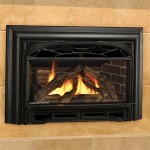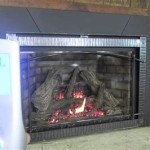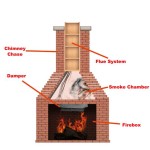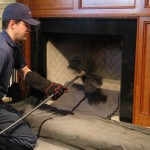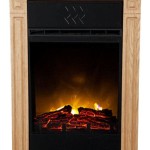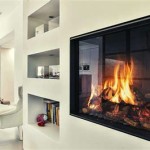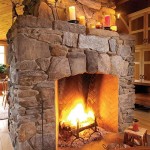Can You Cover Over A Fireplace Mantel? Exploring Your Options
The fireplace mantel often serves as a focal point within a living space, drawing attention and contributing significantly to the room's overall aesthetic. However, tastes evolve, and the existing mantel may no longer align with current design preferences. Rather than undertaking a full removal and replacement, a common query arises: Is it possible to cover over the existing fireplace mantel? The answer is generally yes, but with certain provisos and considerations to ensure safety, structural integrity, and a pleasing final appearance.
Covering a fireplace mantel is a viable option for homeowners seeking to refresh their decor without the expense and disruption of a complete tear-out. Essentially, the process involves attaching a new facade over the existing structure, effectively concealing it. This approach can be particularly appealing for mantels that are structurally sound but aesthetically outdated, or those with design flaws that are easier to hide than to repair. The feasibility and success of covering a mantel, however, hinge on several crucial factors that necessitate careful evaluation.
Safety Considerations and Regulatory Compliance
One of the primary concerns when altering any element near a fireplace is safety. Fireplaces generate significant heat, and the materials used in construction and alteration must be appropriately rated. Building codes typically dictate minimum clearances between combustible materials and the firebox opening or chimney, and these regulations must be strictly adhered to. Covering a mantel with unsuitable materials could create a fire hazard, potentially leading to property damage or personal injury. It is imperative to consult local building codes and, if necessary, engage a qualified building inspector to ensure compliance before commencing any work.
The type of fireplace also influences the safety requirements. Wood-burning fireplaces, for instance, generally have stricter clearance requirements than gas fireplaces due to the higher temperatures they generate. Likewise, the type of material used for the original mantel plays a role. If the existing mantel is made of a non-combustible material like brick or stone, the options for covering materials may be broader. However, if the original mantel is wood, careful consideration must be given to heat shielding and the properties of any covering material. Using professional grade heat shields if desired materials are not naturally heat resistant is recommended.
Furthermore, altering the mantel height or depth could affect the airflow around the fireplace opening, potentially impacting its efficiency and safety. Any changes that might impede the proper venting of exhaust gases must be avoided. It is advisable to consult with a qualified fireplace specialist to assess the potential impact of any proposed modifications on the fireplace's performance.
Material Selection and Aesthetic Integration
The selection of materials for covering a fireplace mantel is a critical aspect of the project. The chosen material should not only be aesthetically pleasing but also possess adequate heat resistance and durability. Common materials used for covering mantels include wood, stone veneer, tile, and metal. Each material offers distinct advantages and disadvantages in terms of appearance, cost, and ease of installation.
Wood is a popular choice for its warmth and versatility. It can be stained, painted, or carved to achieve a wide range of styles. However, wood is combustible and requires careful attention to clearance requirements and potentially the use of a fire-retardant coating. Stone veneer provides a more substantial and fire-resistant option. It offers the look and feel of natural stone without the weight and expense of solid stone construction. Tile, available in myriad colors, patterns, and textures, is another durable and heat-resistant choice. Metal, particularly steel or iron, can create a modern and industrial aesthetic while providing excellent fire resistance. Sheet metal can effectively cover existing mantels provided proper installation techniques are used.
Beyond material properties, the aesthetic integration of the covered mantel into the overall room design is paramount. The style, color, and texture of the covering material should complement the existing décor and architectural features. Consideration should be given to the scale of the mantel relative to the fireplace opening and the surrounding wall. A mantel that is disproportionately large or small can detract from the room's visual harmony. Careful planning and attention to detail are essential to achieving a cohesive and aesthetically pleasing result.
Installation Techniques and Structural Considerations
The method of installation is crucial for ensuring the stability and longevity of the covered mantel. The covering material must be securely attached to the existing mantel, preventing movement or detachment over time. The appropriate adhesive or mechanical fasteners should be selected based on the materials being used and the weight of the covering. The surface of the existing mantel should be properly prepared to ensure adequate adhesion. This may involve cleaning, sanding, or applying a bonding agent.
The structural integrity of the existing mantel should be assessed before commencing any work. If the original mantel is damaged or weakened, it may not provide a suitable base for covering. In such cases, repairs or reinforcement may be necessary before proceeding. Adding significant weight to a compromised structure could exacerbate existing problems and potentially lead to collapse.
When installing the covering material, attention should be paid to creating clean and precise joints. This is particularly important for materials like stone veneer or tile, where uneven joints can detract from the finished appearance. The use of shims or spacers may be necessary to achieve uniform spacing and alignment. For wood installations, proper joinery techniques, such as mitering or butt joints, should be employed to create a professional-looking finish. Ensuring all measurements are precise and cutting materials accurately should provide longevity of the covering.

The Making Of A Slip Covered Mantel Made By Carli

Build A Diy Faux Beam Fireplace Mantel Cover Jennifer Rizzo

The Making Of A Slip Covered Mantel Made By Carli

How To Cover A Brick Fireplace With Wood Stone Nina Hendrick Home

Build A Diy Faux Beam Fireplace Mantel Cover Jennifer Rizzo

How To Cover A Brick Fireplace With Wood Stone Nina Hendrick Home

How To Cover A Brick Fireplace With Wood Stone Nina Hendrick Home

How To Hide Electronics On A Mantel

The Making Of A Slip Covered Mantel Made By Carli

Build A Mantel Over Brick Fireplace
Related Posts

